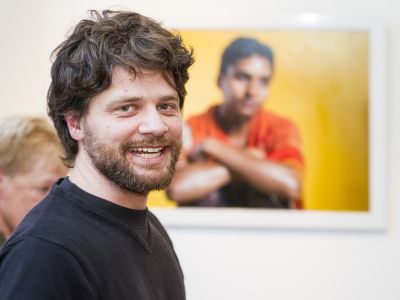
[notice]Gateway News interviews Jonathan Griffiths, curator of “40 Stones in the Wall” — and art exhibition with a Kingdom purpose — at the National Arts Festival in Grahamstown.[/notice]
What is the 40 Stones in the Wall art exhibition all about?
Jonathan: 40 Stones in the Wall is a group exhibition of Christian artists at the National Arts Festival and an outreach/mission of local Grahamstown churches (Frontiers – an NCMI church, His People and Baptist Church and Spiritfest — the festival programme of the Anglican Church in collaboration with the Methodist, Presbyterian and Catholic churches).
The purpose of the exhibition is to see God glorified in the visual arts by displaying work that is inspired by Him and reflects the artists’ Christian faith and is also of a high standard conceptually and aesthetically. With the exception of one artist in this year’s show all the artists are trained in the fine arts or are currently studying fine arts.
At the same time the exhibition is also a way for us to fulfil the Great Commission and to reach out to festivalgoers with the gospel. All the aspects of the exhibition are submitted to God in prayer and offered as a means for Him to speak to people. Christians from local churches man the exhibition space and seek opportunities to engage with viewers in spiritual conversations inspired by the artworks.
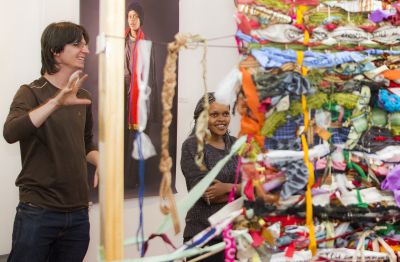
How did it get started?
Jonathan: The first exhibition and outreach was done in 2014 and was started by Marie Mohlomi from OM arts South Africa and Heidi Salswedel, a local Grahamstown artist. OM’s mandate is to support and empower local churches and they were pivotal in supplying the organisation, resources, etc to get it started. This happened again in 2015, and now in 2016 they have passed on the baton and the local churches have put on the exhibition. Grahamstown was chosen because of the National Arts Festival.
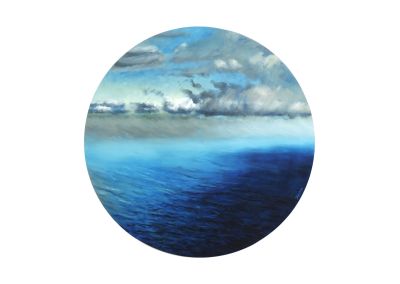
What stands out from the first two years?
Jonathan: Each year has been very different and has focused on different things. The first year was the pilot and a lot of groundwork was laid. The name of the exhibition was also chosen based on the number 40 which was a significant theme of festival that year (40th year of the festival and 20 years of our new democracy). The number 40 also has a significance in the Bible as a number of transition. Israel wandered the desert for 40 years, Jesus fasted for 40 days, etc. The idea was to begin a transition in the arts festival and to introduce a space for Christian artists to exhibit their work and to testify to their faith.
The second year was a continuation from the first and involved more outside support from OM than the first year. We have a long term vision for the exhibition which is inspired by the story of Israel marching around the city of Jericho for seven days before it collapsed. We feel the need to continue until we feel a significant change in the arts and walls being broken down that keep people from seeing God in the arts. The second year had the problem of having too much external support and as a result the local churches and local artists and churches did not take ownership of the exhibition, which resulted in a lack of cohesion in the team and affected the feel of the space.
In the first two years the space was well received by visitors and supported by the churches. We had large numbers of significant conversations with people and believe we impacted many. Both years involved live painting in the venue as a means to draw people in and start conversations.
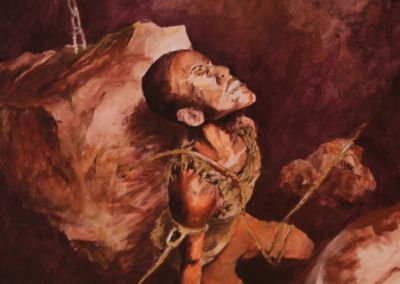
What was this year’s approach?
Jonathan: This year our approach has been to lift the standard of work in the exhibition and to try and create a more contemplative atmosphere, as befits a traditional exhibition space. The work has also been much more clearly Christian than in previous years and so it enables viewers to engage in a more meditative way than in the past. Previously we relied a lot on conversations in the space to get the meaning of the art across whereas this year we have free pamphlets which help people understand the Christian significance of the works, and as a means to start conversations about how they relate to Christianity.
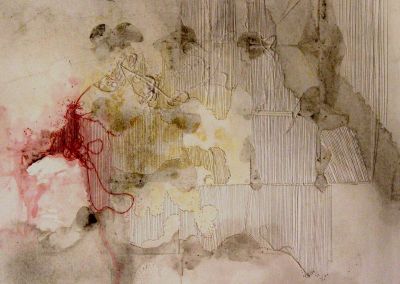
How has it been going so far?
Jonathan: The method of evangelism in an exhibition space is different to how one might approach it in other contexts. There is a tension between allowing the artworks to speak to people and a desire to engage people in direct conversations. It is always difficult to know the response of individual viewers to the exhibition and how God may be speaking to them through the work though we trust that seeds are planted in people’s hearts. We have had examples of people being powerfully moved by individual artworks (for example a women who was moved to tears by one of the artworks and how it spoke to an unresolved pain and loss in her life) and this encourages us to keep praying that His Spirit take the testimony and word expressed in the work and make it resonate in people’s hearts and lives.
A major theme for us is creating a tabernacle, which was a place which housed God’s presence and expressed His glory through visual beauty. This year there has been a very strong sense of His peace, presence and beauty in the space and we really believe that people are encountering God in many different ways and that something of their perception of Him and of Christianity is shifted in a positive way.
40 Stones in the Wall can be visited in The Cory Room, next to the Long Table on High Street (Grahamstown)


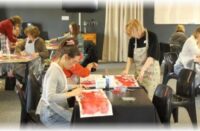
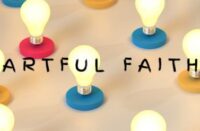

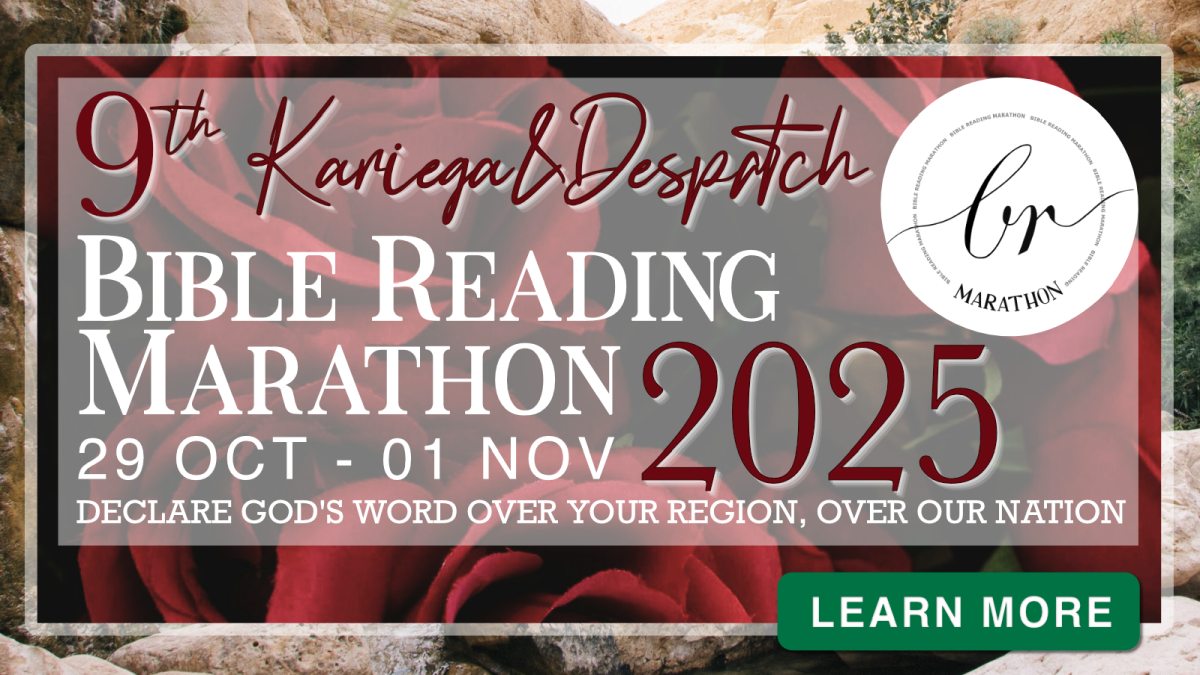
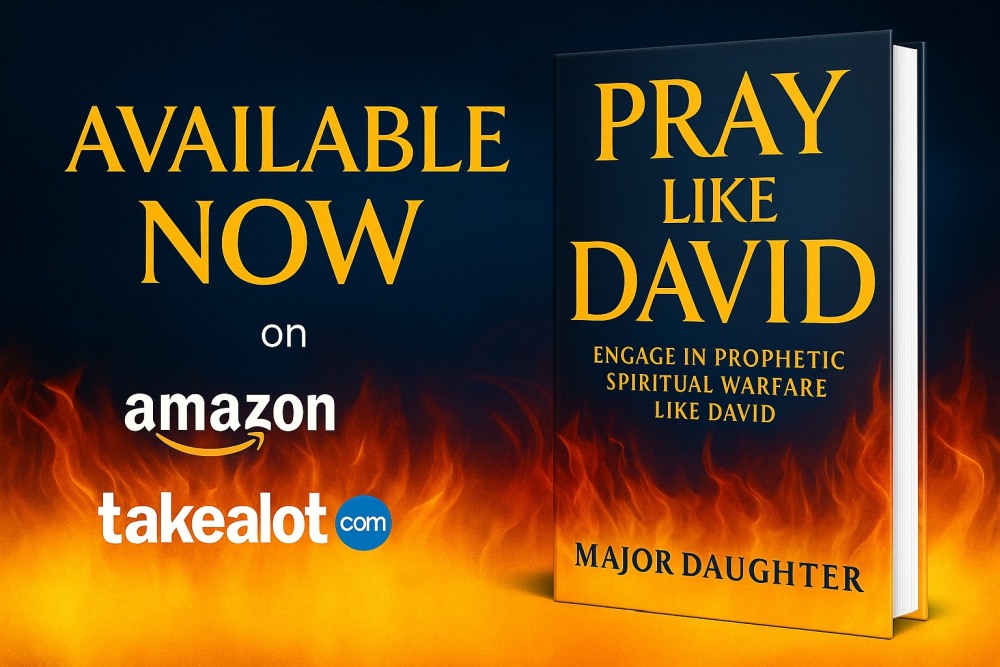

God created. How wonderful to see people using art to touch and inspire and express in such deep & meaningful ways.
I believe that art has the power to capture people’s attention and imagination – their hearts. Unfortunately this powerful medium has been used extensively to add to the confusion and meaninglessness in our world. The 40 stones exhibition does the opposite of this and it is encouraging to see. Keep up the good work!
As Convener of Spiritfest, I want to thank God for the blessings that the 40 Stones exhibitions have brought to our outreach in the National Arts Festival. Well done, all you wonderful people!